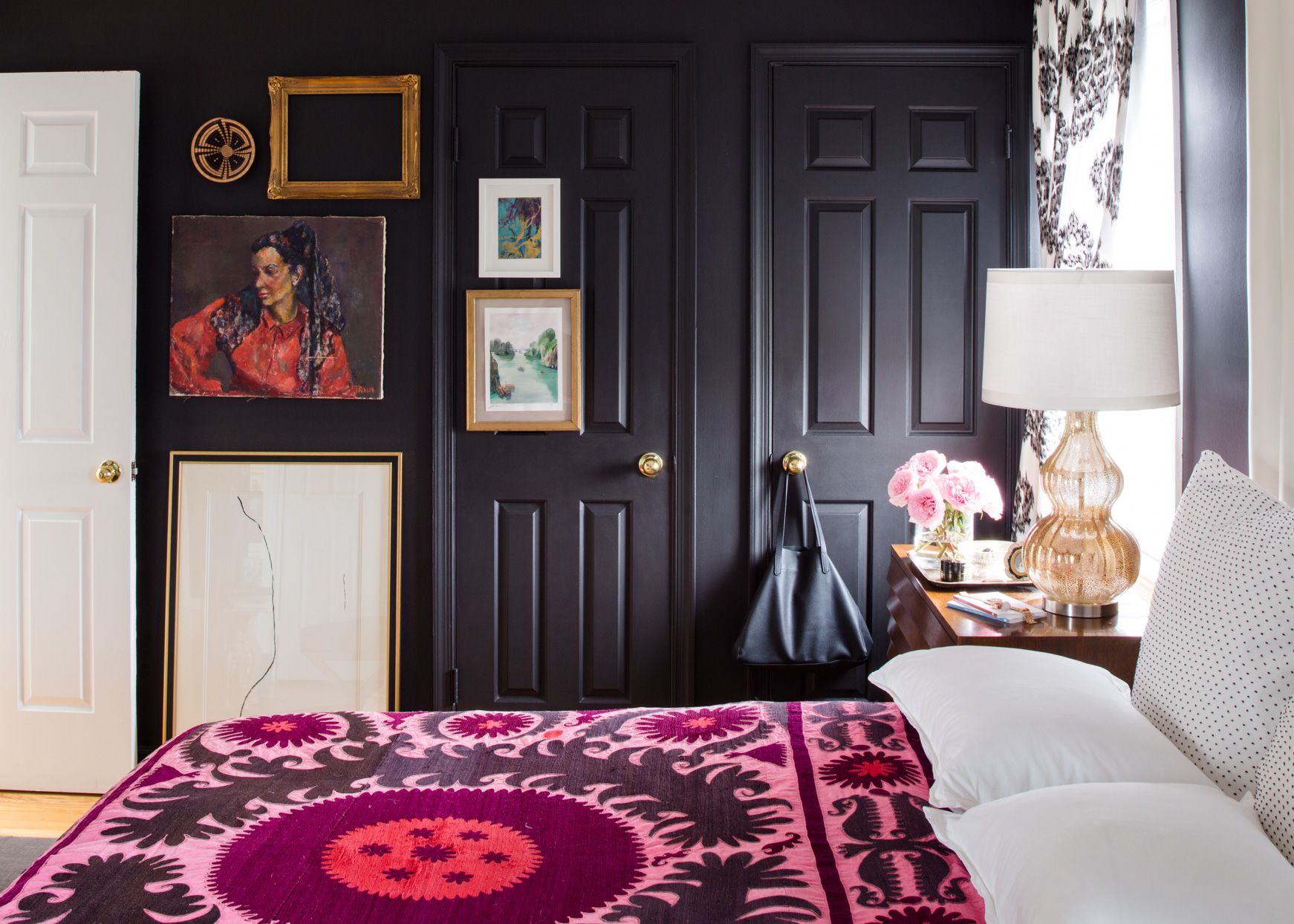
As the year comes to a close and we look back on the biggest pop culture moments, Olivia Rodrigo’s sophomore album Guts is top of mind. After the success of her debut album Sour, expectations were high—and Rodrigo delivered.
The album, which features the popular single “Vampire,” reflects the growing pains Rodrigo experienced personally and artistically over the past few years through an angsty atmosphere represented both lyrically and in the album’s aesthetic. Guts feels more moody, dark, and gothic than Sour. Like many other micro-aesthetics that popped up throughout the year (hello Barbiecore, tomatocore, and culinarycore), it inspired a new punchy, purple-tinged aesthetic we’re calling the vampire aesthetic.
- Andre Kazimierski is CEO of Improovy Painters in Ann Arbor, Michigan.
- Nathalie Malka Gispan is founder of Nathalie M Designs in Southern California.
If you’re feeling hungry for this moody aesthetic, we have you covered. Here’s what you need to know about incorporating the vampire aesthetic into your home decor this year, according to experts.
How to Achieve the Vampire Aesthetic
Mix Dark Colors
To keep your vampire-inspired decor from looking flat and two-dimensional, experts recommend creating a color palette that incorporates multiple tones rather than just one or two. Yes, this aesthetic is purple-tinged, but adding other colors creates contrast and depth. Try pairing black and purple with hints of red (like Rodrigo’s iconic red lipstick), similar shades like blue, or other shades like pink or white.
Don’t be afraid to mix in lighter hues, too. For this particular aesthetic, Andre Kazimierski, CEO of Improovy Painters, recommends against dark purple wall colors.
“A lighter purple accentuated with darker touches in trim and decor can accomplish this look and atmosphere really well,” he says.
Stick to muted tones (like lavender, mauve, green-blue) and earthy shades rather than bright and bold hues. When paired with dark accents and decor, light colors can be just as dramatic and vampy as dark colors in this aesthetic.
JOHN BESSLER
Decor Makes the Look
Wall treatments of paint and wallpaper lay the foundation for this aesthetic, but decor undoubtedly makes the look, says Nathalie Malka Gispan, founder of Nathalie M Designs in South California. Even a few carefully chosen pieces can make a big impact.
“Accessories are a must; rhinestone skulls, candles for ambient lighting, oversized vases, and touches of brass in picture frames or a chandelier will add elegance and sparkle to satisfy any goth or vampire craving,” she says.
Layer Different Textures
Texture plays a major role in vampire decor: From sleek surfaces to natural textures and luxe finishes, finding the right balance is the key to creating a formal yet inviting space. Try out some traditional gothic textures such as velvet, silk, and lace, advises Malka.
Mix in Metallics
As with most gothic styles, metallics are a must for pulling off this look. Metal accents and decor break up dark spaces and reflect light, adding to the vintage, goth style.
Play with Patterns
Rodrigo’s new album aesthetic incorporates a retro style along with the moody. In particular, ’80s-era decor plays a prominent role in the album artwork. Play this up by incorporating retro-inspired patterns such as florals, stripes, and abstract shapes into your decor. Throw pillow covers, curtains, and upholstery are great places to experiment with these patterns.
Karyn Millet
Vampire Aesthetic vs. Traditional Gothic Styles
The word “vampire” may make you think of dark, gothic decor, but in this case, the style is a bit more light and playful than traditional gothic styles. Rodrigo is a pop star, after all. While the style incorporates lots of purple, it’s not necessarily the dark, royal tones you may be used to seeing in gothic decor. Instead, the hues trend toward violet and lavender.
She also incorporates more patterns and playful motifs, such as butterflies, stars, and red lipstick, into her album artwork. It features a playful pop-rock flair that lightens the aesthetic and distinguishes it from gothic decor.
